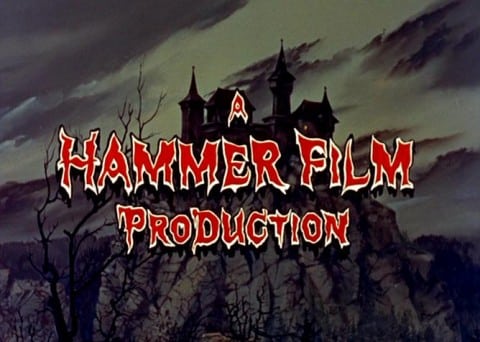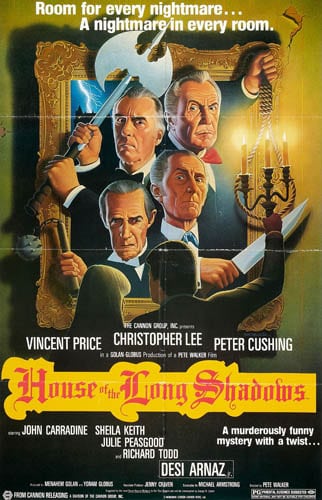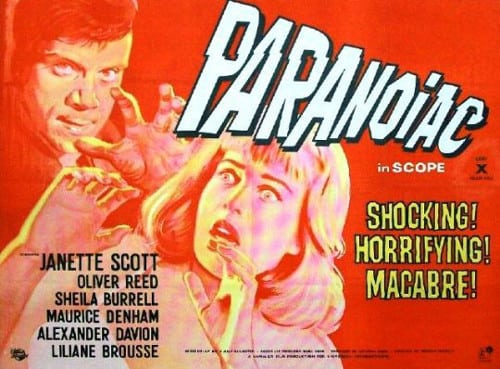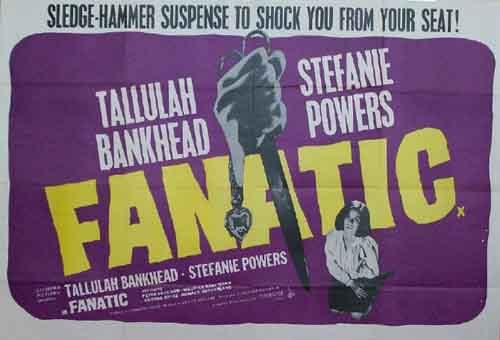Dracula: Prince of Darkness (1966)
Directed by: Terence Fisher
Written by: Jimmy Sangster
Starring: Andrew Keir, Barbara Shelley, Christopher Lee, Suzan Farmer
UK
AVAILABLE ON BLU-RAY AND DVD
RUNNING TIME: 90 min
REVIEWED BY: Dr Lenera, Official HCF Critic
Transylvania, ten years after Dr. Van Helsing killed Count Dracula. Father Sandor prevents the staking of a woman’s corpse and chastises the presiding priest for perpetuating the fear of vampirism. Visiting a nearby inn, he meets four English tourists – Alan Kent and his wife Helen, and Alan’s brother Charles and his wife Diana – and tells them not to visit Karlsbad. However, they ignore his advice and, as night approaches, find themselves abandoned by their fear-stricken coach driver two kilometres from Karlsbad, in view of a castle. A driverless carriage takes them to the castle, where they find a dining table set for four people, their bags unpacked in the bedrooms, and a servant named Klove saying that his master, the late Count Dracula, ordered that the castle should always be ready to welcome strangers….
Anyone familiar with this website for some time is probably used to me having the odd controversial view every now and again, and here’s another; Dracula: Prince Of Darkness is the equal of the 1958 Hammer Dracula. In fact, I would go slightly further than that and say that it could have been a slightly better film if it wasn’t for some major plot holes which drag it down just a bit, certain elements of the story just not having been thought through. Nonetheless, this is Hammer Horror at its best. From its highly atmospheric first half to its thrilling second, it has a constantly sinister edge to it that’s still strong today when in many of the other pictures it’s faded a bit, and if it had Peter Cushing in it it would perhaps be the quintessential Hammer Horror, the one to show people if they only had to watch one. As it is, it features an adversary who is just as memorable as Van Helsing in Father Sandor, and who I wish so much had been in more films [though he was the hero in a comic book series]. As for Dracula, the main problem many seem to have with this film is his limited screen time and his lack of dialogue, but I think this works tremendously. He’s scarier, and it’s as if he feels such contempt for normal humans that he doesn’t even lower himself to engage in dialogue with them and just opts to hiss at them, while it’s not as if Dracula’s presence isn’t felt in every minute of the movie.
The origins of this second Dracula sequel [The Brides Of Dracula didn’t, of course, actually have Dracula in it] lie in a 1959 treatment by Anthony Hinds. Hammer kept on asking Lee to return as Dracula, and he finally agreed in 1965, whereupon Jimmy Sangster, for some reason calling himself John Sansom, adapted Hinds’s material into a screenplay. The BBFC requested a planned shot of Alan’s decapitated body stuffed into a chest with his head on the top be removed from the script. A deal with co-funders Seven Arts and distributors 20th Century Fox and ABPC resulted in a four film package which also consisted of Rasputin The Mad Monk, The Plague Of The Zombies and The Reptile, and which would all be shot at the re-opened Bray Studios. Dracula: Prince Of Darkness was shot back to back with Rasputin: The Mad Monk, using the same sets and much the same cast. Lee often said that the reason he doesn’t say anything in the film is because he hated the lines that Sangster gave him and refused to speak them, though Sangster claimed that he just didn’t write him any. Lee’s stunt double Eddie Powell became trapped underwater during the drowning scene and nearly died because he couldn’t find the oxygen cylinders in the dark. Suzan Farmer was asked to dub over all of her co-star Barbara Shelley’s screams as they weren’t considered strong enough. The BBFC required the removal of shots of blood in the resurrection scene, a close-up of the stake in Helen, and Diana almost drinking Dracula’s wound, though the USA saw the film uncut. For some reason, BBC2 used to show the cut version but ITV would screen the full version. The film’s double billing with The Plague Of The Zombies did very strong business.
The film begins with a re-run of the finale of Dracula, inserted because it ran slightly below its contracted length. Unfortunately, when we see Dracula’s ashes blow away in the wind, it highlights a major flaw with the plot when it develops a bit later. Dracula’s servant Klove [and how does he know how to revive Dracula?] has all of Dracula’s ashes in a box, so are we expected to believe that he was able to find and gather them all up? O well, never mind. The funeral staking, taking place of course in that area of Black Park by the lake we’ve seen several times before, is a great introduction to the formidable, gun-toting and rather rude Sandor. “You are an idiot, father. Worse than that, you are a stupid frightened idiot” he says to the priest there. “You won’t have your mind broadened by this lot. I wouldn’t tolerate them” he shouts in the pub where we’re then introduced to our foursome who, with a few economical lines of dialogue, are divided into narrow minded and prudish [Alan and Helen] and adventurous and sensual [Charles and Diana]. When stranded by their coach driver in the forest, I don’t know why they don’t attempt to walk the remaining two kilometres to Karlsbad, but the film has already begun to have a strong ominous feeling of dread which only magnifies when the four find themselves in the castle. Dracula may not be alive yet, but his spirit still seems to be, yet only Helen seems to have a feeling that something’s wrong. The acting, dialogue and direction in these scenes really are terrific, even though little happens until nearly half the film is over.
The camera prowls the corridors of the castle at night while James Bernard’s musical motifs repeat and repeat bring the simmering tension to an almost unbearable point, and then we get the resurrection, performed by Klove like a religious ceremony. He stabs Alan, pours Dracula’s ashes into his coffin, hoists his body over it and slits his throat [not seen in detail], loads of blood pouring onto the ashes and we see the outlines of veins and bones forming [great special effects work by Les Bowie] until a fog obscures everything and we end with the sight of Dracula’s hand clawing its way onto the side of the coffin in the best of all Dracula’s resurrection scenes. Helen soon succumbs to Dracula and becomes a more sexual, glamorous looking being who even seems to make a play for Diana [“You don’t need Charles”]. However, rather amusingly, as soon as Diana is in Dracula’s sights, he pushes Helen aside despite her clearly wanting more of the twisted form of erotic bliss [I love the moment when she looks longingly at him] that Dracula has given her. The action then relocates to Sandor’s monastery andfrom then on it’s monks vs. vampires, the latter helped not just by Klove but a Renfield-like [he even eats flies] character called Ludwig who lives in the monastery. The strongly sexual nature [far more than Dracula] of the whole thing reaches its peak in Dracula slitting his chest and Diana going to lick his blood [a toned down bit from the original novel], and the unforgettable, horrific scene, redolent of rape, where Helen is dispatched, writhing horribly as the monks hold her down and Sandor hammers a stake into her.
The climax has Dracula killed by having the ice shot out from under him [running water can kill him now], which is ingenious though it begins the ‘anything goes’ approach to killing off Dracula which would eventually reach daft levels in the series, and it seemed to be Spring earlier in the film. No, continuity isn’t great, and I always ask myself questions like, when discovering the wagon that Klove, Dracula and Helen used to get to the monastery, why does Father Sandor simply place a rosary in each coffin and then leave them in place, rather than smashing and burning each coffins so the vampires would have no place to shelter when the sun rises? And why does Klove put Alan’s corpse in a chest, but leave the arm dangling out when he seems so fastidious about everything else in the castle? But it’s easy to overlook these issues due to the sheer incredible feel and style of the piece, Terence Fisher’s direction being note perfect and adeptly managing the change in pace half way through the film, and Bernard Robinson’s castle interior sets being just remarkable considering the budget. I’m not sure that the film even really misses the great Jack Asher; the coldness of Michael Reed’s cinematography seems just as appropriate. The camera is actually far more mobile here, and there are still some fine uses of colour like the flashes of yellow inside the monastery. And, while there’s considerable visceral power to many moments, the camera still avoids or cuts away at times; the biting scenes being left to the imagination and most of the gruesome details unseen or only partly shown.
I don’t think Lee was ever better as Dracula; he just doesn’t need dialogue to project power and pure evil. Andrew Kier’s wordly monk is given most of the best lines and he really is a terrific character, almost as formidable as his adversary and willing to bend the rules of his office a bit, but not a lot, to vanquish evil. Shelley is great as usual, another memorable moment being Helen rapping at Susan’s window saying “Let me in, it’s cold outside” in the most chilling scene of its kind until young Danny visited young Mark in Salem’s Lot. However, I don’t think Suzan Farmer has got enough attention as the one Dracula really wants; she’s sweet but has just a slight coquettishness that’s feels very natural as well as sexy. Of course Barbara Shelley is terrific as usual, in her most sexual role for Hammer. Philip Latham also stands out as the very creepy and, as Charles says, “dusty” Klove. James Bernard’s music is almost omnipresent, his Dracula theme dominating as before [and a portion of the music to Dracula’s climax is reprised too], though it’s some of the other simple but beautifully applied motifs that get under the skin and enhance the atmosphere so much, like the ever so slightly tragic five note pattern that’s kind of a castle ‘theme’. As a listen separately the constant repetition might be too much though. Dracula: Prince Of Darkness remains a superbly crafted effort and is neck and neck with Dracula as the best Hammer vampire film; I guess I prefer Dracula: Prince Of Darkness as a piece of cinema though Dracula doesn’t have those script flaws Dracula: Prince Of Darkness contains. But both showcase Hammer Horror at its very greatest. I guess some may think I’ve rated this film too highly, but then again this is a website called Horror Cult Films. And even watching these films with a more critical eye – God some of them are good!
Rating: 


















Be the first to comment